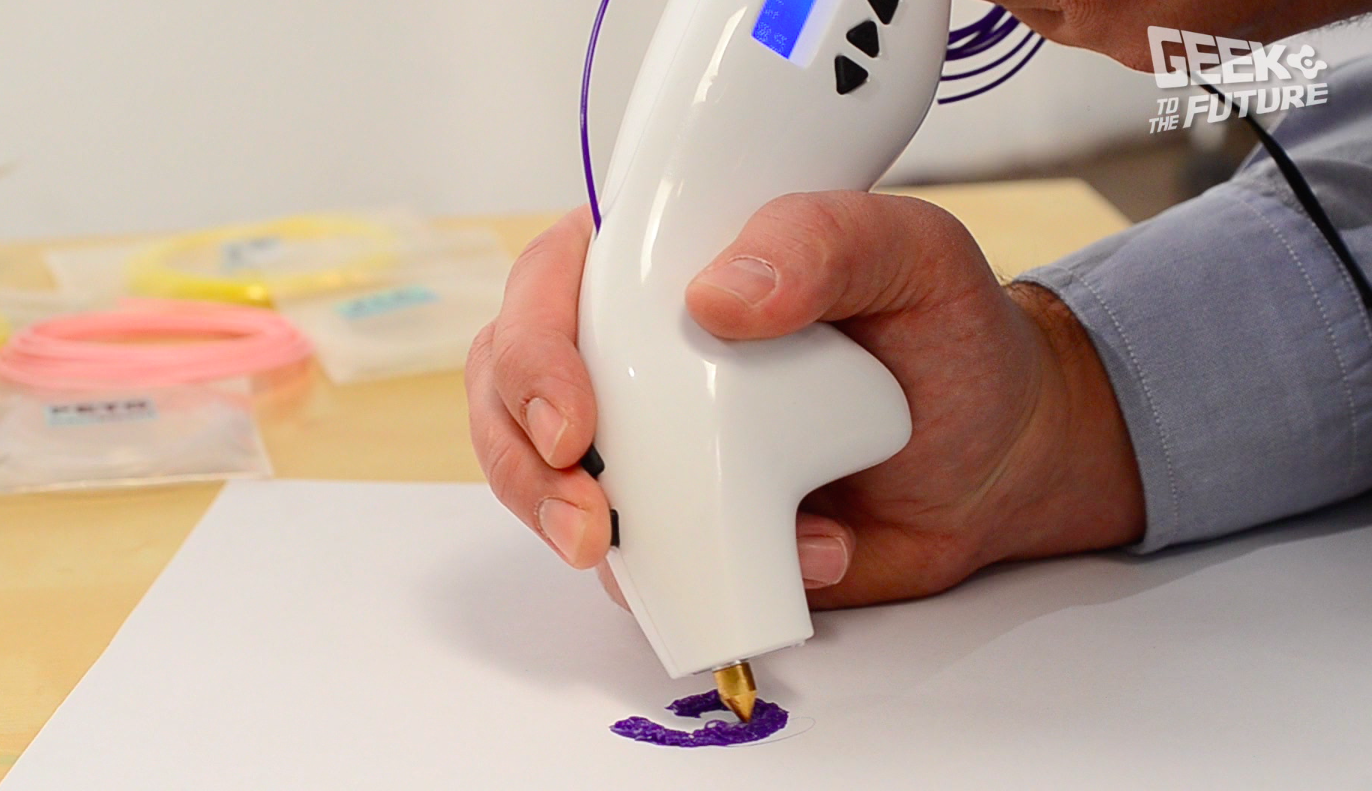3D-pen 3Dsimo: Master of plastics, or creativity without borders

If you are seriously thinking about buying a 3D printer - in the sense that you really want it, but you don’t know what to do with it, practice to start on cats - in the sense that you should try the 3Dsimo drawing pen in the air (read - "Trid and ssimo"). Who knows, perhaps in order to entertain your creativity, the possibilities of this gadget will be enough.
Of course, in our reasoning there is some exaggeration - yet these are devices for various purposes. But they have a common principle of action. Many personal 3D printers and almost all 3D pens (the rare exception is CreoPop type pens that draw with “cold ink”) use the fusing method. The source material - plastic thread - is melted, squeezed onto the base and freezes. The next layer is applied over it and so on ...
We will not delve into the history we say only that the most noticeable phenomenon in the world of 3D-pens, perhaps, was 3Doodler. More precisely, it was the first attempt to combine a glue gun and a plastic thread for 3D printers. The success of 3Doodler on Kickstarter did not go unnoticed, people rushed to improve the pens for drawing in the air - and 3Dsimo is just the result of this innovative itch.
')

What is the feature of 3Dsimo? Its developers have created a heater that allows you to work with different types of plastic. And his - this plastic - more than a dozen varieties. The most common are ABS and PLA. And then there is PET, HIPS, BendLay, LayWood and so on. And everyone has their own properties and their own requirements for heating.

3Dsimo - the device is the simplest. Using the display and buttons, you can choose the type of plastic and its melting rate (slow, normal, fast) - the heating starts, which lasts from 5 to 10 minutes.



As soon as “100%” appeared on the screen, the gadget is ready for work. We thread the device into the device by pressing the “forward” button located next to the tip (the “back” button helps to slightly slow down the flow of the melted thread, but the developers do not recommend using it for more than two seconds - the mechanism may be clogged) - now you can sculpt.
Having seen enough of the miracles that the developers are doing, we enthusiastically took up the miracle device ... Five minutes passed, ten ... half an hour ... Enthusiasm began to evaporate somewhere. We tried to create a simple volumetric figure - in our case, a hexahedron - or just a cube ... But in the end we got something similar to the first experiments of Salvador Dali (as it turned out later, we were deceived with the choice of plastic - ABS is best for volumetric designs took PLA - see table above).


In the end, we realized that you need to use templates - and now you can use them to build quite complex structures. Interestingly, hipster glasses and the Eiffel Tower are among the most sought after.



A reasonable question is where and how can 3Dsimo be applied? In addition to making toys, jewelery and souvenirs, the 3D pen (which heights artists who masterfully own a “three-dimensional pen” can reach, can be seen in the Etsy designer online community) can be used in modeling or repairing plastic parts. True, all this is possible if you have fine motor skills, have a craving for creativity, and your hands grow from an anatomically correct place.
In general, our recommendations do not differ in originality: take and draw - in a few minutes it will be clear whether this toy is for you.

3Dsimo is planned for sale in MadRobots stores. A month ago, representatives of the company estimated the starting price of the gadget at "from 4,500 rubles." - today, given the realities of the crisis, its cost (in the case of a decision on sales) will naturally be higher. As for the "consumables", then this is quite a common material, which is unlikely to be a problem - for example, a plastic ABS thread with a cross section of 1.75 mm can be purchased almost at a hardware store.
PS Video illustration of the above is the video “3Dsimo: Will 3D-pen replace 3D-printer?” On our YouTube channel Geek to the Future
Source: https://habr.com/ru/post/364469/
All Articles